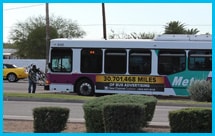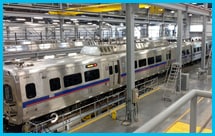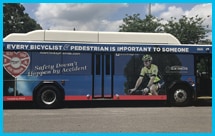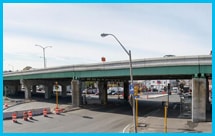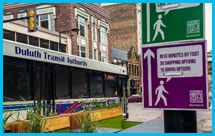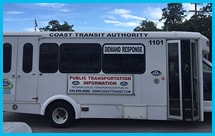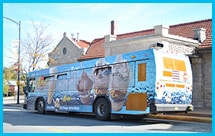HI-5 Stories from Public Health Innovators
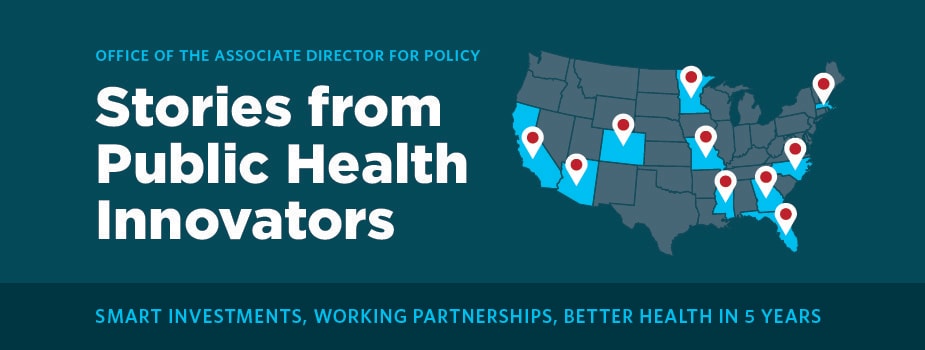
HI-5 community-wide approaches can improve health in the places where we live, learn, work, and play. Learn how public health innovators are working with multisector partners, bringing data to the table and convening stakeholders.

EITC helps eligible low- to moderate-income working people keep more of the money they earn by reducing the taxes they owe. Learn more about CDC’s partnership with the National Network of Public Health Institutes and the Georgia Health Policy Center to conduct an EITC Policy Implementation Lab.
The Office of Policy, Performance, and Evaluation’s (OPPE), Office of Population Health and Healthcare Office (PHHO), presented a webinar entitled “Earned Income Tax Credits (EITC) and Health: Learn more about the role public health can play in non-traditional health interventions.

Introducing or expanding public transportation is a HI-5 intervention that helps people reach everyday destinations, such as jobs, schools, healthy food outlets and healthcare facilities, safely and reliably. Learn more about how transit agencies and public health work together:
New partnerships emerged in Maricopa County, AZ, when transportation and planning agencies assessed the health impact of a proposed transit expansion.
San Francisco, CA provided paratransit services to reduce transit barriers for disabled, elderly, and lower-income patients trying to reach their healthcare appointments.
In Denver CO, a local community foundation facilitated the process of expanding light rail in a vulnerable neighborhood, by training residents and transit officials to communicate effectively with each other.
Florida is meeting the transportation needs of a diverse population, from rural to urban, from millennials to retirees, by offering a menu of multimodal transit options tailored to the needs of different communities.
Massachusetts is tackling crumbling infrastructure, while increasing mobility and access to jobs, schools, and healthcare. Read how they replaced an old overpass with a pedestrian-friendly boulevard that provides access to light rail.
Minnesota improved accommodations for biking and walking to make it easier for people to access transit stops. In the process, they reduced transportation and health inequities.
On the Mississippi Gulf Coast, Hurricane Katrina devastated infrastructure. But the storm also gave the local health department and transit agency an opportunity to collaborate to build new modes of active and mass transit.
When Columbia, Missouri’s county transportation department overhauled its outdated public transit system, they turned to the county health department for a health impact assessment to help in the transit planning process.

Multi-Component Worksite Obesity Prevention includes worksite nutrition and physical activity programs designed to improve health-related behaviors and outcomes among employees. Learn more about how worksite strategies can support healthy behavioral change:

In North Carolina, two workplace health programs, Workwell and Mountainwise, address obesity, diabetes, heart disease, and stroke prevention by providing opportunities to eat healthy and increase physical activity in the workplace. Read how each program uses heath educators or faith coordinators to work with employers and employees to create a healthier and more active workforce.

Safe Routes to School (SRTS) is a HI-5 intervention that helps students find safe and active transportation to school. SRTS helps communities educate students and families and find ways to build safe walking and biking infrastructure. Learn how communities are working to encourage active and safe transportation routes for students:
In North Carolina, transportation and public health leaders collaborated to help children be active on the way to school. Public health innovators worked with community partners to support policies, training programs, and infrastructure updates that help children stay safe while walking or biking to school.

School-Based Programs to Increase Physical Activity is a HI-5 intervention to help students become more physically active. From including physical activity in normal classroom activities, to expanding physical education classes, learn how schools and public health work together to improve students’ health:
Georgia started a program to make 30 minutes of physical activity a part of every school day. Using facts to show how physical activity improves academic performance and attendance, public health innovators worked with schools to create active classroom time and provide annual fitness checks.
Watch this interview to learn how state policy and public health innovators in North Carolina are increasing school-based physical activity and changing the way students are active every day.
Watch how Georgia Shape worked with schools to create active classroom time, provide annual fitness checks, and improve students’ health.
